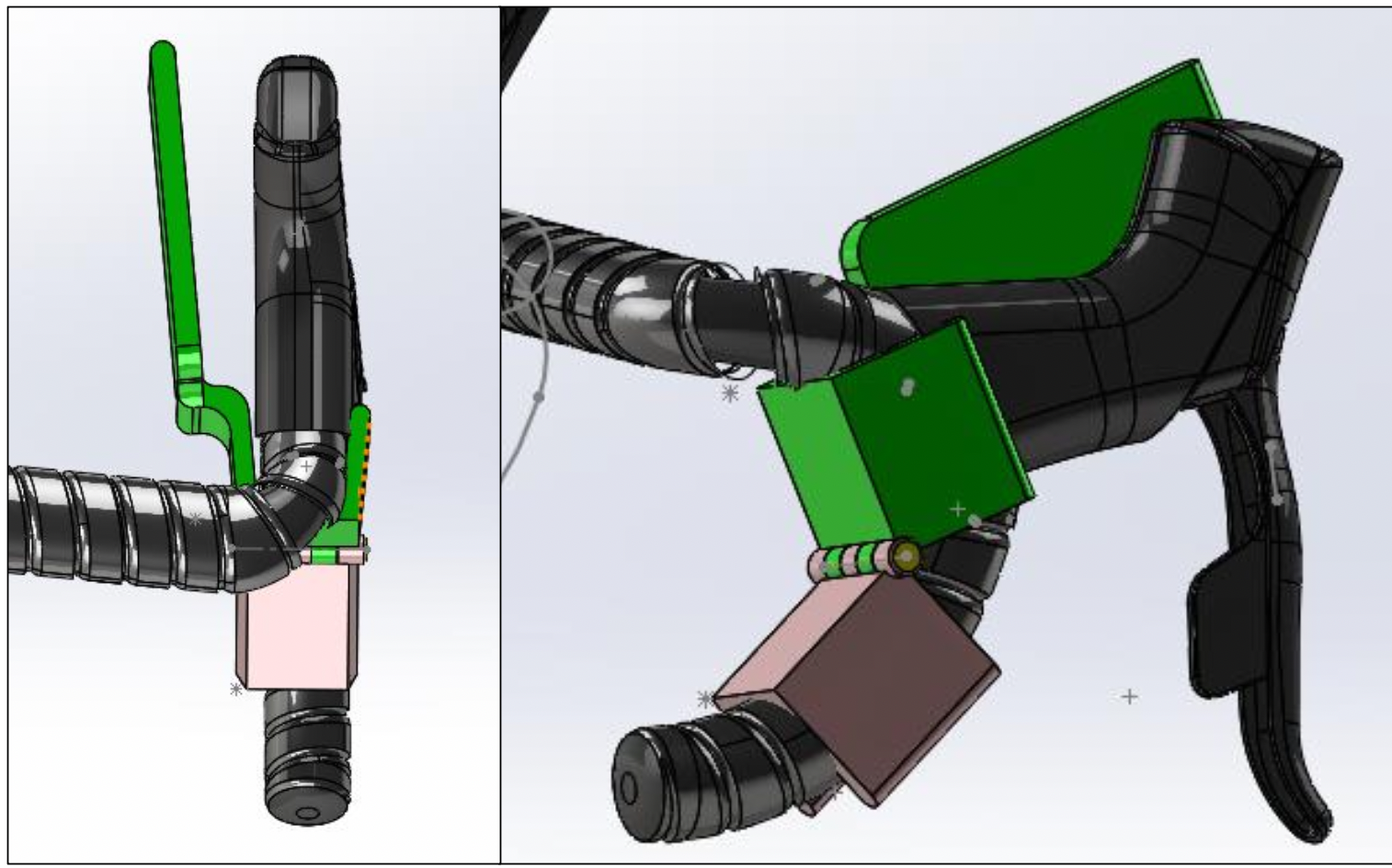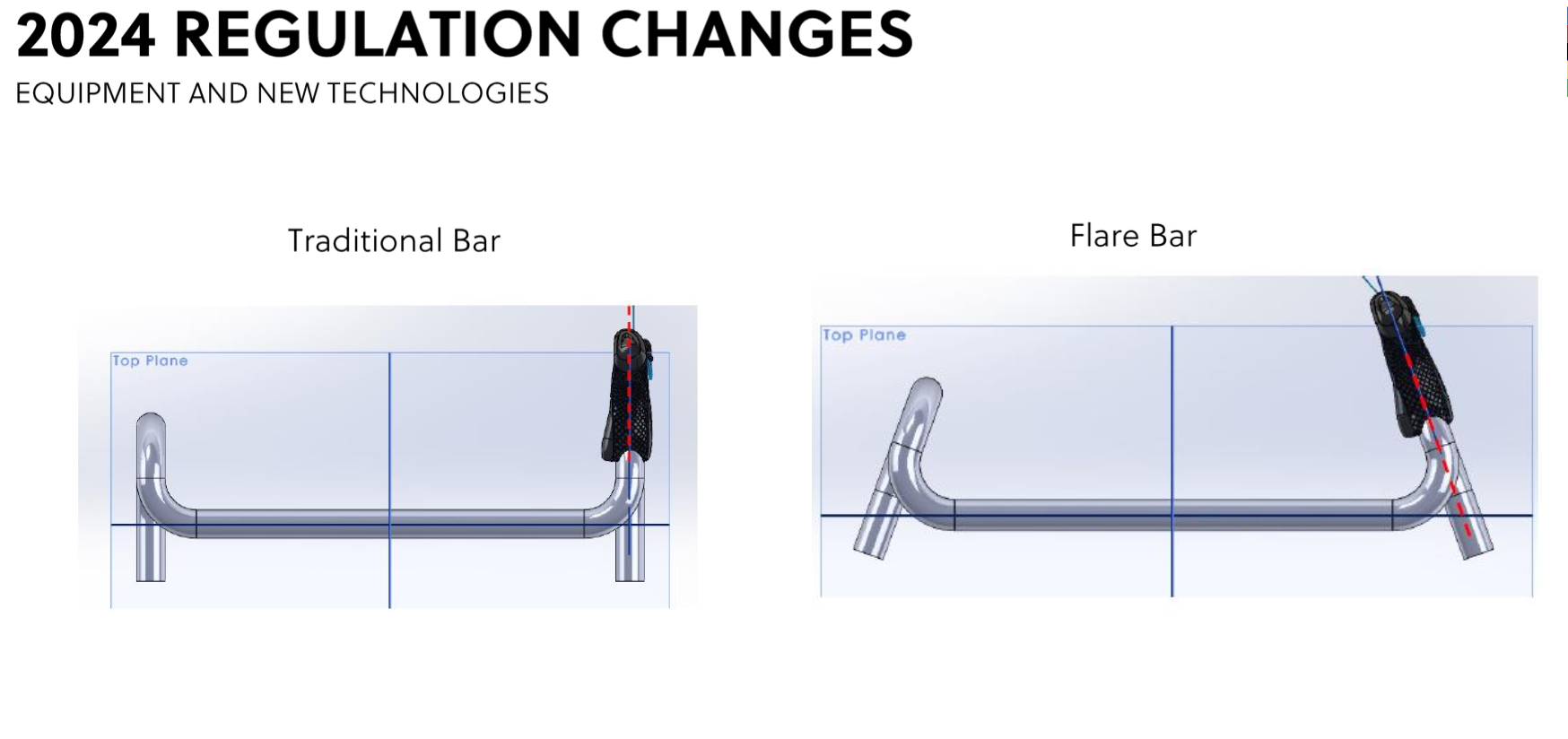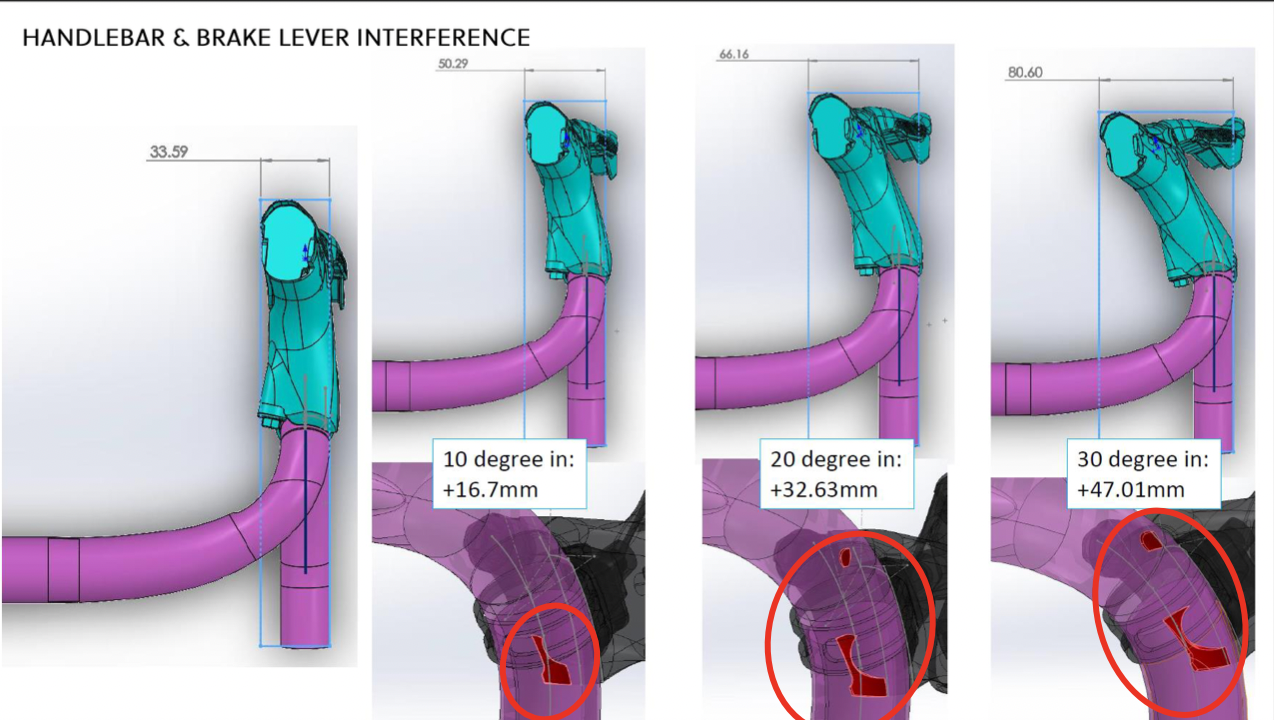Editor’s Note: Over the past week, Escape Collective made several requests for comment to the UCI for this story, and have been told that any potential response would come after the holidays. Due to the important safety issue in question, we’ve chosen to proceed with publishing our reporting so far. We will follow up with any UCI response after January 1.
Last week news emerged of a planned UCI rule to ban inward-angled brake levers starting in 2024. The angled-in position is increasingly popular in pro racing as riders seek every aerodynamic advantage possible, but the UCI says it comes with unacceptable safety risks, including that angled-in levers may create additional stress on the handlebar and potentially cause failures.
A key point that has largely been missed in both the UCI’s limited communication on the rule and the reaction to it is that the safety concerns – if validated – apply to any rider using an inward-angled brake lever position, amateurs and pros, racers and recreational riders alike. Most concerning, while the UCI claims it is acting due to safety concerns, it hasn’t outlined how it came to that conclusion or how long it’s had this information.
To its credit, the UCI appears to have done its homework on this regulation update. The new rule is fair and measured, and the response from some quarters, like the CPA riders’ union, has been far more positive than to past rule changes.
To recap developments: the UCI will prohibit “extreme inward brake lever inclination” and work with manufacturers to develop an installation guide. Details are to come but the rationale – as referenced in the single-paragraph announcement buried in the annual WorldTour and Women’s WorldTour seminar that effectively announced the new rule – is that “the extreme angles inhibit a rider’s braking capacity” and “constitute a modification of the product beyond its intended use.”
As uncovered by Escape Collective in a leaked UCI internal document, work with the World Federation of the Sporting Goods Industry (WFSGI) revealed “an increased number of handlebar stress points as a result of the extreme brake lever inclination,” and work is ongoing to define a safe range along with a jig to aid commissaires in implementing the rule at races and assessing if levers are within an acceptable angle in relation to the handlebar drop.

That clearly establishes the safety argument the UCI is making. But while its rules are focused on UCI-sanctioned racing, the safety risk applies to any rider running inward-angled levers.
And it was only in the days after this news broke that further details began to emerge. First, in speaking to CyclingNews, CPA president Adam Hansen indicated the UCI had conducted research with manufacturers and had identified additional stresses, potential failures, and even cracks on carbon handlebars specifically caused by inward lever angles; anything over 10° seems to be considered extreme, putting handlebars at risk for potentially catastrophic failure.
A week on from the news of the new regulation, the UCI still hasn’t communicated more about what it knows about this possibly critical vulnerability. Escape Collective has made several requests for comment in the past week to the UCI, both after the initial mention of the new rule and again several days ago regarding what the UCI’s research showed on potential handlebar failures. A spokesperson said the organization would “see if and how we can respond” but would need to wait until after the holiday break.
What riders and manufacturers say
Hansen since confirmed to Escape Collective that the UCI had engaged him in his capacity as CPA president to survey WorldTour riders, the results of which were a mix of concern for riders braking ability, especially mid-peloton, and an appreciation for the improved ergonomics that inward angled levers offer. Furthermore, Hansen also repeated the UCI’s safety concerns emanating from its research conducted with manufacturers.
WorldTour riders Escape Collective spoke with largely reiterated Hansen’s points, including concerns about mid-peloton braking, with some highlighting reduced reaction times resulting in riders causing crashes due to rear-ending slowing riders in front of them. One WorldTour pro is even hoping the UCI bans flared drops next; as he explained, sometimes riders trying to move up in the pack can fit their hoods through gaps, but the wider drop sections bump or become tangled with other riders, causing crashes. Another pro who currently rides with what some may consider extremely angled levers is happy to see the new rule and the improved safety it should bring, even at the cost of comfort in his own riding.
Given that the UCI has also said it is working with manufacturers to develop installation guidelines for 2025 and that Hansen referenced research with manufacturers, we contacted nine manufacturers, including Shimano and SRAM – which supply both groupsets and cockpits to pro teams through their PRO and Zipp brands, respectively – as well as several bike suppliers with their own handlebar offerings. Together, the group we contacted account for almost every men’s and women’s WorldTour team in some way.
Several brands did not reply or had holiday out-of-office messages, but even among respondents, views were mixed. One brand, who asked to remain anonymous, reported the WFSGI meeting did not indicate handlebar failure as the rationale behind the new rule, but rather “rider safety” (which we understood as reduced braking capacity).
Graham Shrive of Factor and Black Inc told us they had never seen a handlebar returned with damage due to extreme lever angles, and more often than not, handlebar failures were due to over-tightening the lever mount clamp. A Shimano spokesperson told us, “we haven’t heard anything or had any reports from PRO about failures due to lever placement.” SRAM has not yet responded to our request for comment.

Canyon provided the most comprehensive response, telling Escape Collective that “inward-angled levers on Canyon road bikes are only acceptable if the inward angle is caused by the flared angle of the dropbar. We refer to this as the inclination angle of the lever. We strongly recommend that the inclination angle equals the flare angle of the dropbar. However, inward bent levers on a classic road dropbar with no flare angle is a safety risk and is not recommended.” [Italics added]
Canyon provided further clarity, explaining that “extreme inclination angles which exceed the flare angle of the dropbar lead to an incompatible contact patch between the handlebar and the lever. In combination with higher clamping torques, which are necessary to carry the higher inward-bending loads on the clamp, and also to compensate for the reduced contact patch, it introduces a stress concentration on the handlebar. This is not part of our standard test protocol and is not recommended. Regarding the inclination angle, Canyon strongly recommends to always stay aligned with the dropbar flare angle.” Canyon is not aware of any real-world failures due to extreme lever angles.

Canyon’s mention of “stress concentrations” and “standard test protocol” is particularly relevant. A UCI document obtained by Escape Collective clearly indicates the additional stress concentrations created by three different lever angles, note how the stress concentrations increase the further the lever is angled inward.
But, as Shrive also explained, ISO testing standards are very specific in how lever and handlebar interfaces are tested. Effectively, the ISO test mandates the lever is mounted and tested straight on the handlebar, meaning the manufacturers cannot pass the required ISO testing if they angle the lever. Furthermore, the lever manufacturers have a torque value based on the ISO testing setup, and so, as explained by Canyon, the additional torque required at extreme lever angles simply isn’t tested. In other words, nobody knows if the handlebars can withstand said additional forces. The UCI’s evidence – which could be the first to investigate this question – may confirm they cannot, but again, the UCI has not shared its findings, and none of the answers received indicate what brands, if any, partnered with the UCI on its research.
There are other factors the UCI may have identified that could also further justify its stance on lever angle, such as the potential for kinking the hydraulic brake lines, which could lead to brake failure, especailly in a crash if the lever is already rotated inwards. It would also be interesting to hear if the UCI investigated the downward inclination of brake levers, which is quite often found in setups running the most aggressive inward angles, and can increase the likelihood of a rider’s hands bumping off the levers in some scenarios. There’s also the question mark around flared drops contributing to crashes in tightly packed pelotons, and if the UCI are investigating those safety concerns.
So is there a handlebar-failure safety issue?
In short, we don’t know answers to any of those questions just yet. It’s possible that the UCI is under pressure from manufacturers not to release initial findings. But the UCI is not responsible for the manufacturers’ well-being, and making a general statement about what is seemingly product misuse by the end user without naming any specific brands could hardly be considered a problem for brands.
But if the UCI’s handlebar-failure evidence does exist, it has missed a huge opportunity to improve the safety of riders around the world by mismanaging the communication around this regulation update. Adept at making mountains out of molehills (or mid-lateral-malleolus-to fibula-head socks out of plain old socks), the UCI has this time taken a positive intervention and somehow still upset many of the cycling community through miscommunication of its evidence backing the rule and ignoring the scope of affected riders.
While the rule focuses on elite-level racing, there are countless riders around the globe who do not ride in pelotons or even groups, for whom the extreme lever angle is either more comfortable, faster, or both. Many of those see the UCI’s latest intervention as needless and out of touch, and due to the UCI’s lack of communication surrounding the issue, are totally unaware of the potential safety issues.
To be fair, it seems in this instance, the UCI has done a (mostly) commendable job on the rule itself. It listened to rider concerns, conducted the necessary research, identified the issue, and moved swiftly to mitigate the problem without simply turning to a blanket ban that would prohibit any ergonomic aid from slightly angled levers.
But its radio silence on evidence for valid safety concerns naturally leads to countless other questions: what exactly did the testing results indicate, how long has the UCI had this information, what angle is too extreme, and are the failures modelled or actually measured? Finally, the most important question: Why hasn’t the UCI communicated the safety issues to the general public?
Despite doing all the hard work, the UCI then fell at the final hurdle by not actually communicating any of this to the general public. As such, the news was greeted with backlash and disillusionment, and for the most part, the more important news that extreme lever angles can cause handlebar failure was almost entirely missed.
As with so much with the UCI, a lack of communication seems to be the main issue here. Had the UCI clearly stated and presented evidence that the extreme inward inclination of the brake levers is dangerous because it had measured X% drop in braking capacity and Y% increased stress on handlebars, risking failures, I dare say last week’s news would have been much better received.
The question is what happens now. Will the UCI share details on what it found? Will that evidence be convincing and do manufacturers share the concerns? And will that information be adequately communicated to the broader public? This is an important-enough issue that we’ll keep asking for answers to those questions.
What did you think of this story?


